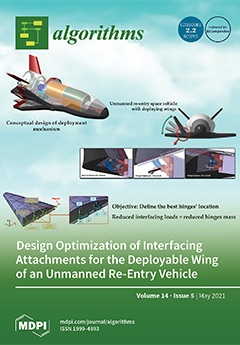Finding substrings of a text
T that match a regular expression
p is a fundamental problem. Despite being the subject of extensive research, no solution with a time complexity significantly better than
has been
[...] Read more.
Finding substrings of a text
T that match a regular expression
p is a fundamental problem. Despite being the subject of extensive research, no solution with a time complexity significantly better than
has been found. Backurs and Indyk in FOCS 2016 established conditional lower bounds for the algorithmic problem based on the Strong Exponential Time Hypothesis that helps explain this difficulty. A natural question is whether we can improve the time complexity for matching the regular expression by preprocessing the text
T? We show that conditioned on the Online Matrix–Vector Multiplication (OMv) conjecture, even with arbitrary polynomial preprocessing time, a regular expression query on a text cannot be answered in strongly sublinear time, i.e.,
for any
. Furthermore, if we extend the OMv conjecture to a plausible conjecture regarding Boolean matrix multiplication with polynomial preprocessing time, which we call Online Matrix–Matrix Multiplication (OMM), we can strengthen this hardness result to there being no solution with a query time that is
. These results hold for alphabet sizes three or greater. We then provide data structures that answer queries in
time where
is fixed at construction. These include a solution that works for all regular expressions with
preprocessing time and space. For patterns containing only ‘concatenation’ and ‘or’ operators (the same type used in the hardness result), we provide (1) a deterministic solution which requires
preprocessing time and space, and (2) when
for
, a randomized solution with amortized query time which answers queries correctly with high probability, requiring
preprocessing time and space.
Full article





